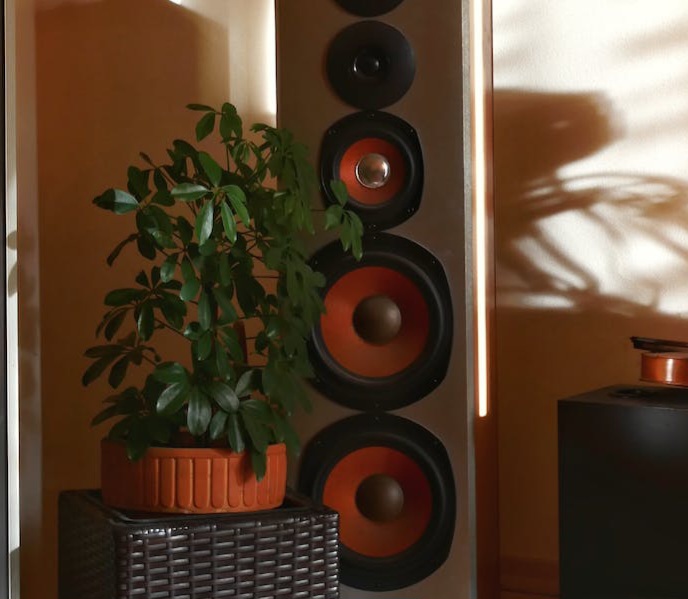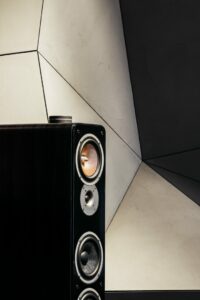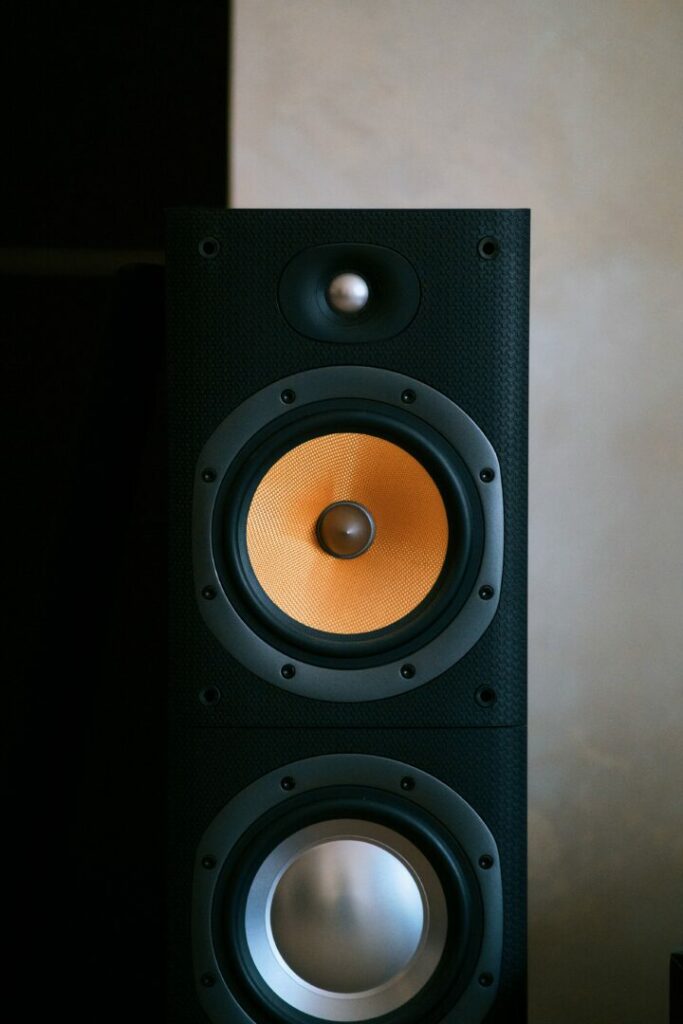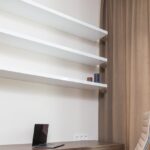Can I Use A Tower Speaker For A Center Channel?
Can I Use A Tower Speaker For A Center Channel?

You know, one of the greatest things about home theater in my opinion is just how varied it can be — especially when it comes to speakers.
From using bookshelf speakers, to doing an in-wall speaker installation, the amount of ways you can make things truly your own is pretty awesome.
One such way is through floor standing speakers (or tower speakers as they’re often called)
Due to their often larger drivers, tower speakers tend to provide powerful sound even when it comes to larger rooms.
However being that you’re here, you’re probably wondering if these same tower speakers can be an adequate substitute for a dedicated center channel speaker?
Well the answer to that is actually pretty interesting.
Can I Use A Tower Speaker For A Center Channel?
Yes a tower speaker can certainly work as a center channel as long as it’s also used with identical tower speakers for the left & right channel since that allows for a more even blending of audio from the front soundstage. A tower speaker would also likely have larger drivers, which could benefit your content by producing fuller sounding dialogue.
What Makes A Good Center Channel Speaker In My Opinion?

To add some context behind whether a floor standing speaker can be used for a center channel, I figured it’d first be important to mention a few things that might be helpful in determining whether a center channel speaker is right for you.
That way it makes more sense when I answer the original question of why it may or may not be a good idea.
But anyway the first thing I’d say to be aware of is the power of the speaker you’re looking at.
This is typically denoted by 2 things, decibels and Ohms.
Simply put, secibels is a guage of how loud a speaker can get while Ohms is the amount of resistance it faces in achieving this.
This is important because it’s the decibel output that’ll tell you the sensitivity rating of the speaker you might be considering.
The sensitivity of the speaker can be a big factor in the choice since it determines how easy the speaker can be powered by your receiver.
The higher the sensitivity rating of the speaker, the easier it likely is to actually power with your receiver.
Whereas a speaker with a lower sensitivity would likely need a more powerful receiver to fully utilize it however.
For example if there was one speaker that was rated at 87dB and one at 91dB, the 91dB speaker would likely be easier to power with a receiver with less wattage capability.
Ideally the higher the decibels the better in my opinion because it’ll likely be capable of reaching a higher perceived output faster.
Another thing that might be helpful to consider is the frequency response of the speaker.
In other words, that’s basically how high and low of a sound frequency the speaker itself is touted as being able to play. You’ll often see this referred to as Hz (Hertz)
The wider the frequency range or Hz, the more likely the speaker is to be more dynamic in its playback capability.
I’ve found that a center speaker that can play a lower Hz tends to synergize really well with the subwoofer.
Of course by no means is this the end all be all since that doesn’t take into consideration things like the tone of the speaker, clarity, etc.
but I’ve found that to be a good reference point.
Something else I like to look at in my decision process is the overall size of the speaker itself since that’ll directly determine how well it fits the room.
If you use a center speaker that’s too big it might block the TV, but if you get something too small for the room you might have issues with hearing dialogue in your movies.
I always try to use the biggest speaker that’ll fit in the room without blocking the screen personally.
There’s a few other factors to consider too like driver size, tweeter size, etc. but these are primarily the main things to be aware of.
Here’s more info on how to decide on one if curious.
Center Channel Speakers Decision Guide
Can Using A Tower Speaker For A Center Channel Work?

So with all of that said and back to our original question; is using a tower speaker for a center channel speaker a good idea?
In short, I’d say yes tower speakers work great as center speakers due to their often larger driver sizes which allows them to output a louder & cleaner sound.
Dialogue & other sound effects tend to sound fuller and easier to discern from what I’ve noticed a lot of the time.
This might in part have to do with how they’re oriented too.
Most center channel speakers are horizontal due to the fact that it’s a design that doesn’t block the screen while still providing convincing spatial imaging with the sound quality.
The WTW (woofer tweeter woofer) design of horizontal center speakers ensures listeners in the middle and off to the sides experience the same audio quality by dispersing it evenly in the horizontal plane.
It’s why a single bookshelf speaker on its side doesn’t necessarily work in that configuration because only having a single woofer & tweeter shifts the sound dispersion — or in other words the way things sound in general.
This can cause peaks & dips with its volume, issues with the crossover, etc.
However when you turn it right side up, that isn’t the case.
In fact and ideally, using 3 of the same speaker vertically and in a line array (meaning in a row) can sometimes yield better results than a horizontal setup.
This can present itself in the way of sounding more cohesive or even more detailed when it comes to the more intricate sounds.
This isn’t always of course, since there’s so many variables to consider like the capabilities of those particular speakers, the characteristics of the room they’re in, whether they’re calibrated, etc
But a line array configuration can definitely sound really amazing.
So in the context of using a tower speaker for a center channel specifically, yes it can definitely work as a center speaker — you’ll just want to make sure that they’re 3 of the same identical tower speakers lined up and spaced out evenly if it is something you’re thinking about.
That way you get the most consistent front soundstage that seamlessly blends together.
This is called timbre matching and while it’s typically important for a convincing blending of the front 3 speakers, if you’re using a vertically placed center speaker, then it’s even more important in that case.
So when the sound pans from one direction to another and across your speakers, them being identical might help with conveying that sense of realism in your content.
Are There Any Downsides To Using A Tower Speaker For a Center Channel Speaker?
So now that we know that using a tower speaker for a center does work, are there any downsides to doing so? Well there’s a few things to mention.
Can Potentially Block The Screen If The Speaker Is Too Big
One potential drawback of using a floorstanding speaker for a center is if the speaker is larger and the TV is sat lower, it could block the viewer’s line of sight from the listening position.
Since the center speaker needs to be directly in line with the other 2 speakers for optimal sound, the left and right tower speaker wouldn’t necessarily affect viewing of the screen; it’s the center one that would if it was too large.
One way that some get around this is by using what’s known as an acoustically transparent screen.
These are screens that basically allows sound to pass through them — allowing you to place the speaker behind it to fully see the screen.
Even though these are screens that are primarily used with a projector setup, it’s still technically one way to circumvent this potential issue.
Acoustically Transparent Screen
Another way besides using a smaller speaker would be also setting your TV slightly higher so it sits above the cabinet of the speaker.
Could Change The Aesthetic Of The Room
Another thing to keep in mind is using a tower speaker for a center speaker would technically mean using 3 for the most optimal sound — and 3 tower speakers could shift the aesthetic of the room.
If it’s a smaller room tower speakers could make it feel smaller, and even in a larger room they could still call attention to themselves.
Of course every room is different though, and some speakers actually look great in some rooms, so it really just depends.
How Exactly Do You Setup A Tower Speaker When Using It For The Center Channel?

Knowing all of this then, how would you setup a tower speaker when using it as a center?
Well honestly I’d say it really depends on the room. However there are at least a few general things to keep in mind.
Firstly, try to keep all 3 front speakers equal distances from each other.
That way the audio from your front soundstage (the left, center, and right speaker) blend together evenly.
Another thing that’ll help is calibrating them through your receiver.
Most modern receivers include some sort auto optimizer mic that allows it to use room correction software to adjust your speakers to match your room.
Also make sure the center speaker doesn’t block your line of site with the screen.
If it does, moving your seating or propping the display up a bit might help.
Other than that though, a tower speaker is really setup the same way you would a normal center speaker.
Final Thoughts
In short, a tower speaker for a center channel can certainly work as long as it’s in tandem with 2 additional tower speakers directly lined up and positioned equal distance from each other.
While it definitely depends on a bunch of things, the likely larger drivers might produce cleaner sounding audio because of their additional sonic capabilities.
As long as it doesn’t block your view of the screen, I’d say this kind of home theater setup can definitely sound amazing.
But that’s it for now. Until next time, make it easy, keep it simple!
About Me

Jay
Hey everyone it’s nice to meet you. I'm Jay, writer & founder of the site Easy Home Theater. I've been with this hobby of home entertainment for many years now. I decided to create this site to be a helpful resource, and share everything that I've learned from personal experience with you. I also happen to be a huge gamer, lover of all things tech related, and a major fitness buff (love weightlifting)
Contact: Contact Jay
Facebook: https://www.facebook.com/Easyhometheater/
X: https://x.com/easyhometheater
Pinterest: https://www.pinterest.com/easyhometheater/pins/
Instagram: https://www.instagram.com/easyhometheater/
Followit: https://follow.it/easy-home-theater
Bluesky: https://bsky.app/profile/easyhometheater.bsky.social







Leave a Reply